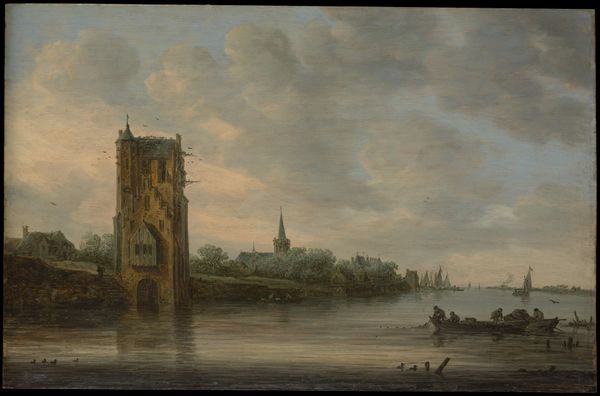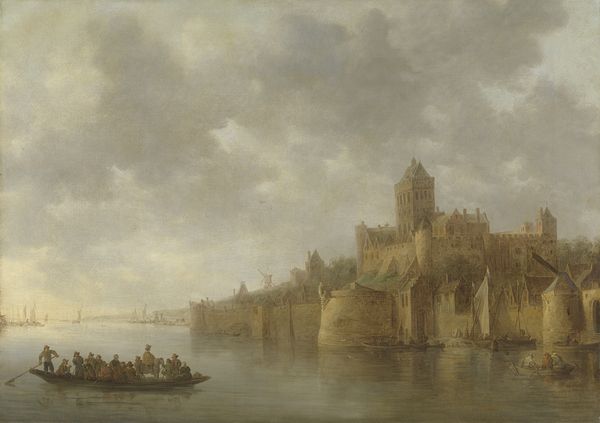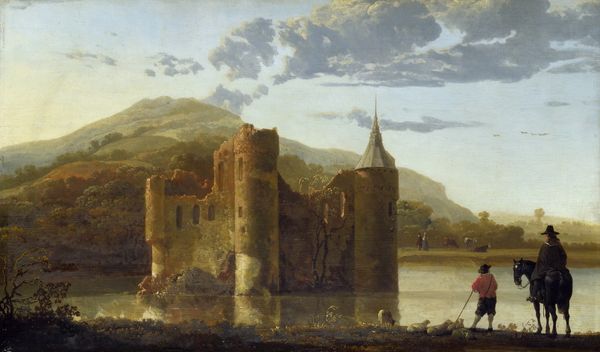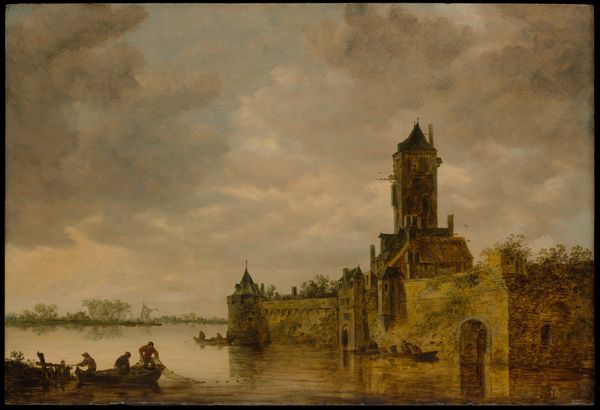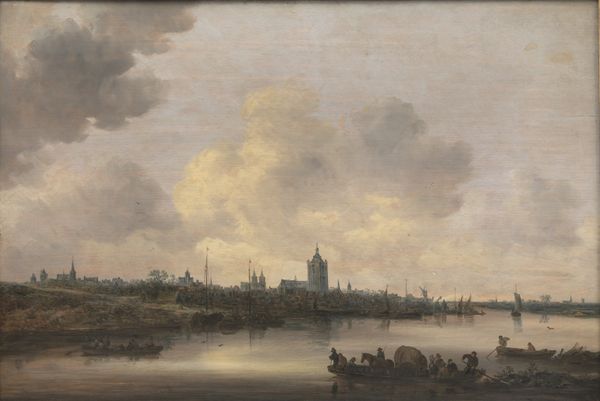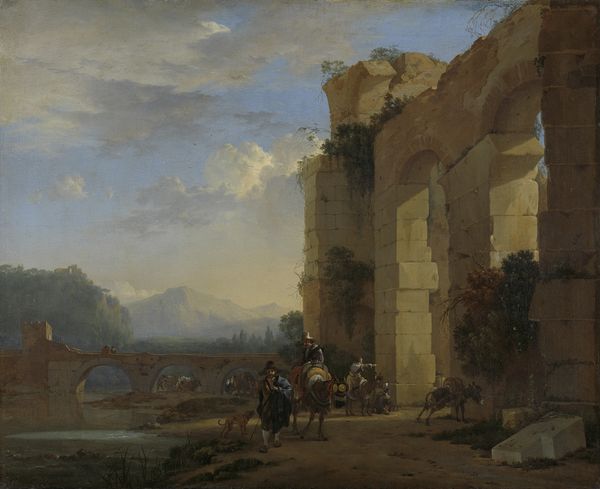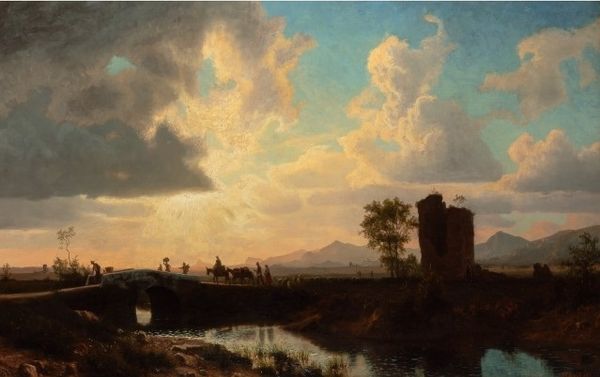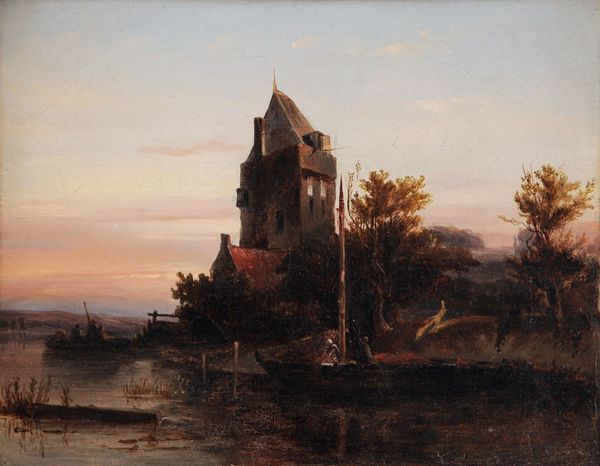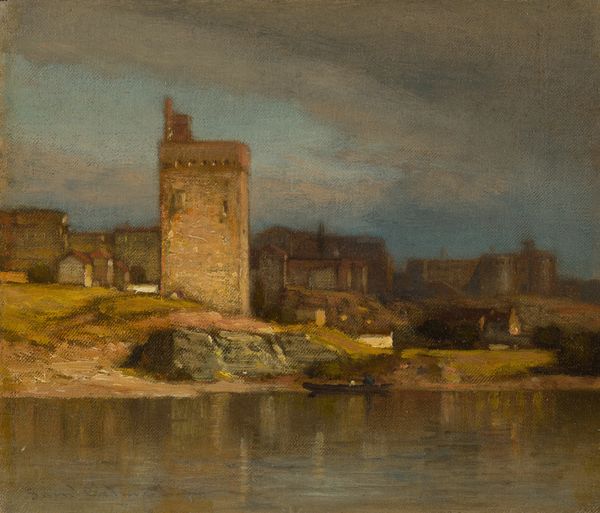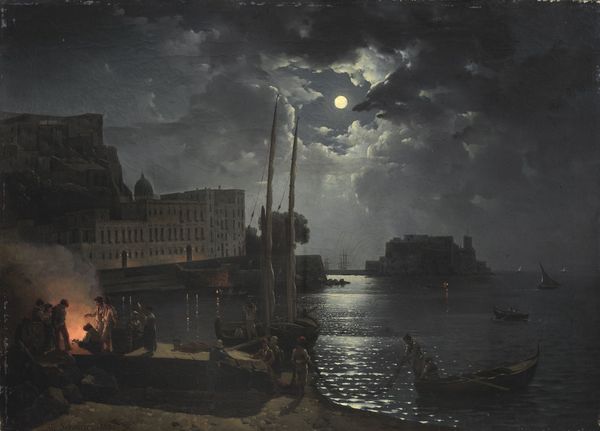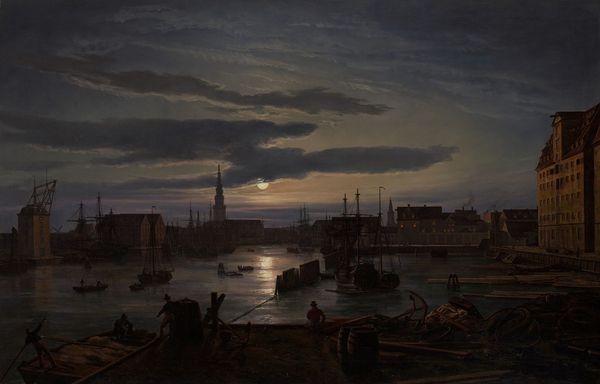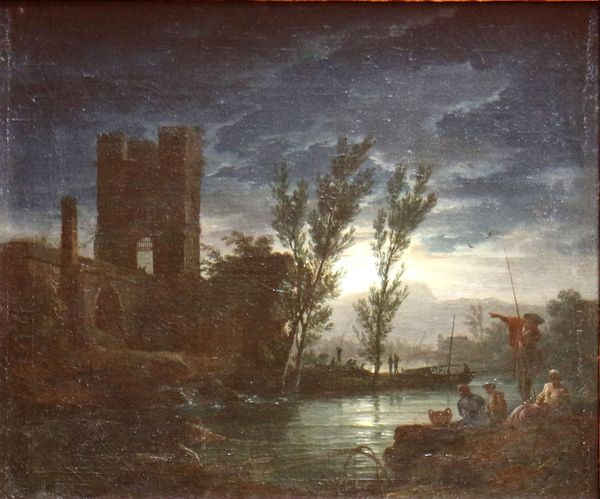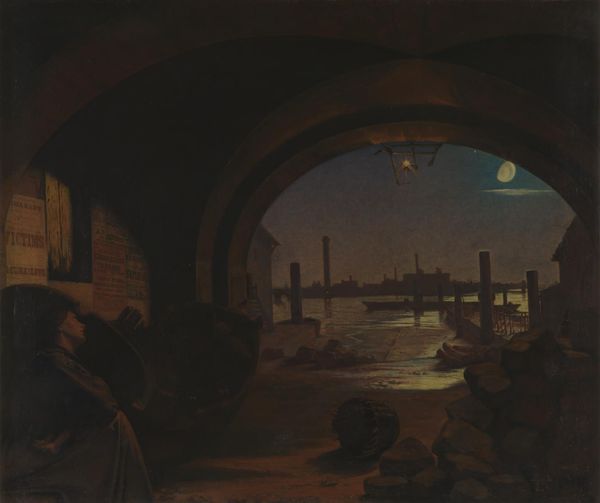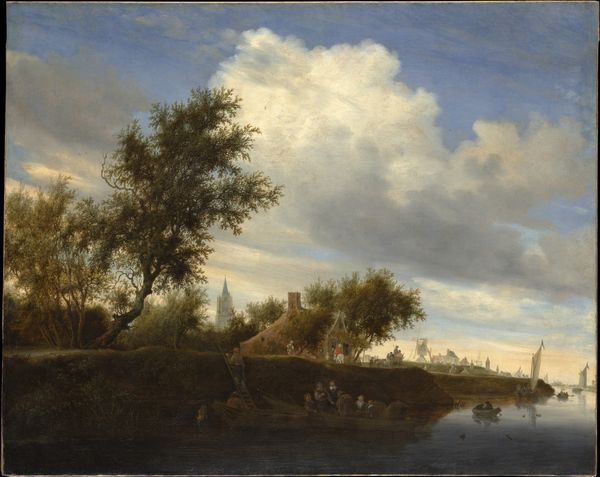
painting, oil-paint, canvas
#
painting
#
oil-paint
#
landscape
#
perspective
#
canvas
#
romanticism
#
chiaroscuro
#
cityscape
#
realism
Dimensions: 59 cm (height) x 81 cm (width) (Netto), 77.7 cm (height) x 101.8 cm (width) x 9 cm (depth) (Brutto)
Curator: Standing before us is Anton Melbye’s "Tour St. Jacques and Notre Dame, Paris. Evening," an oil on canvas, created in 1848. Editor: The muted tones immediately give me a sense of the social and political unease of the time—the eve of revolutions sweeping across Europe. The gloom feels heavy. Curator: Note Melbye’s technical mastery in capturing the light filtering through the clouds. This focus on chiaroscuro—the interplay of light and dark—heightens the dramatic effect and exemplifies elements of Romanticism, albeit with a realist approach. How would that impact the process of painting? Editor: I'd imagine a deliberate and labour-intensive process of layering oil paints. One has to think of Paris in the mid-19th century, pre-Haussmannization. Consider the urban planning, access to the river for trade and transportation... who benefited from these cityscapes and how were the materials sourced and distributed? Curator: That’s insightful. Examining this artist’s particular mode of production gives it an additional historical resonance, reflecting broader tensions related to class and labour practices of that period. The brushwork seems to emphasize texture, creating a tangible sense of place. What meaning can be found in a historical place of worship represented in such an environment? Editor: Well, Notre Dame, like Tour St. Jacques, becomes a silent witness in the face of a changing social order. These landmarks aren’t just architectural achievements but powerful symbols steeped in centuries of shifting power dynamics. How do these material objects speak to a moment of anxiety and the challenge of social conventions, which speaks so vividly to our present? Curator: Absolutely. I hadn’t considered it in such a modern sociopolitical framework. Editor: Thinking about access to representation – and who holds the means to represent Paris this way – becomes an interrogation of both artistic practice and social hierarchies, too. Curator: The dialogue between history and materiality has definitely expanded my view of the artwork, making me consider aspects I would have missed focusing purely on aesthetics or artistic technique. Editor: And I think recognizing the confluence of art and historical moment provides us with a far richer way of encountering art, understanding its context within society and our ongoing conversations about it today.
Comments
No comments
Be the first to comment and join the conversation on the ultimate creative platform.
